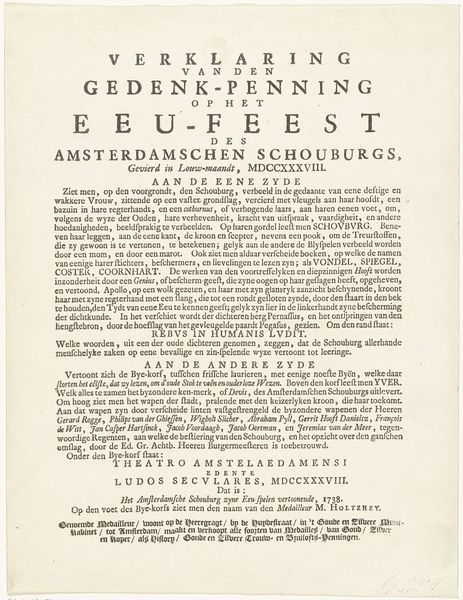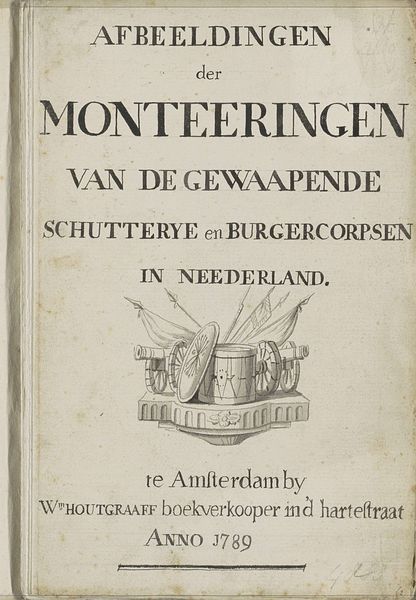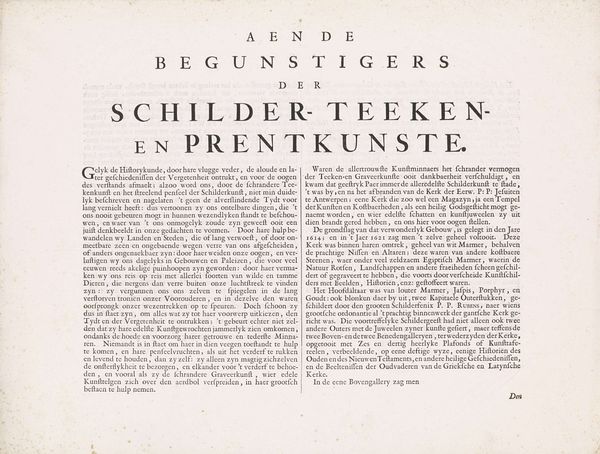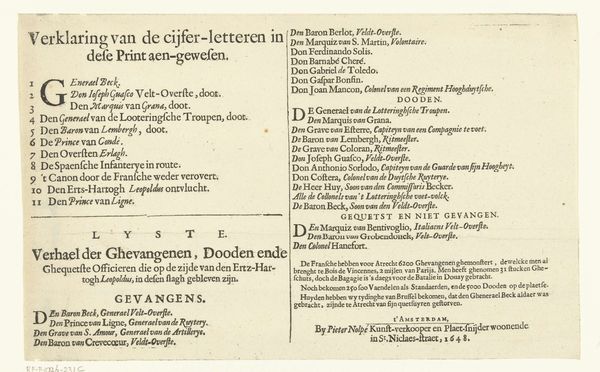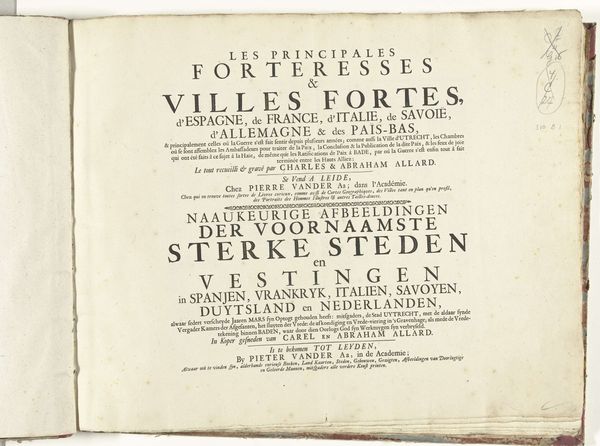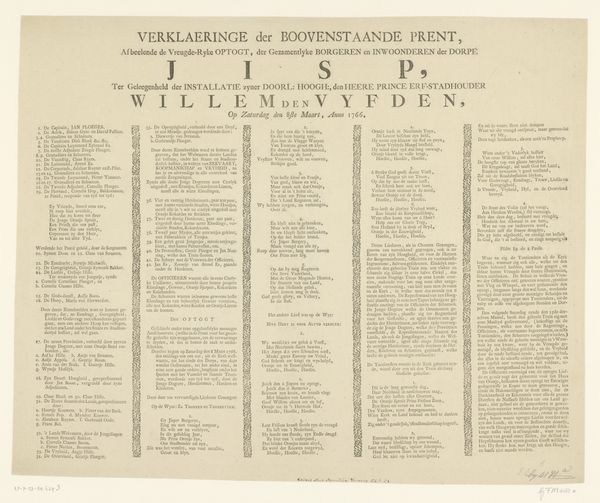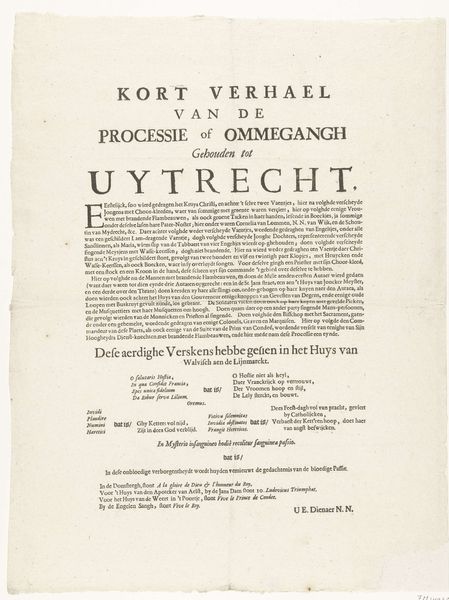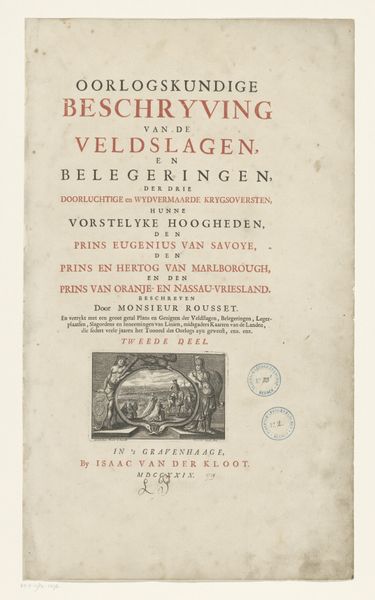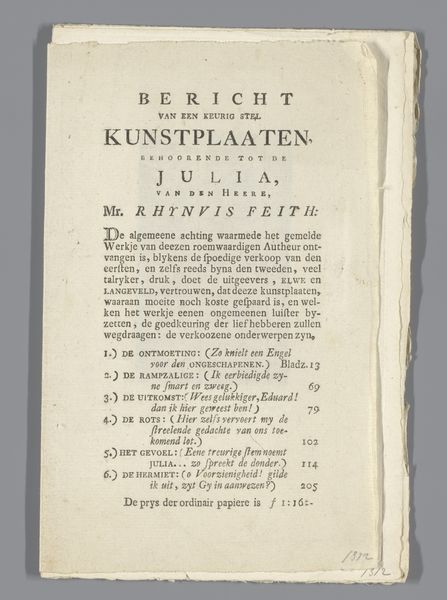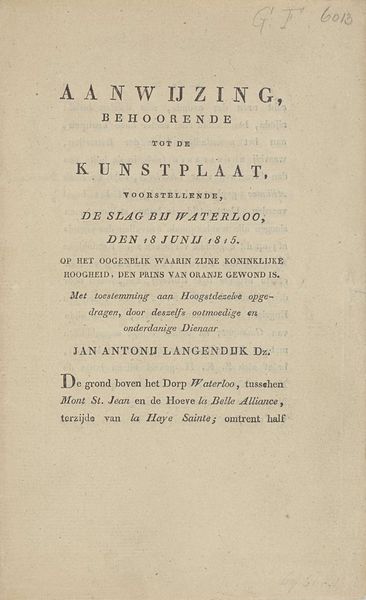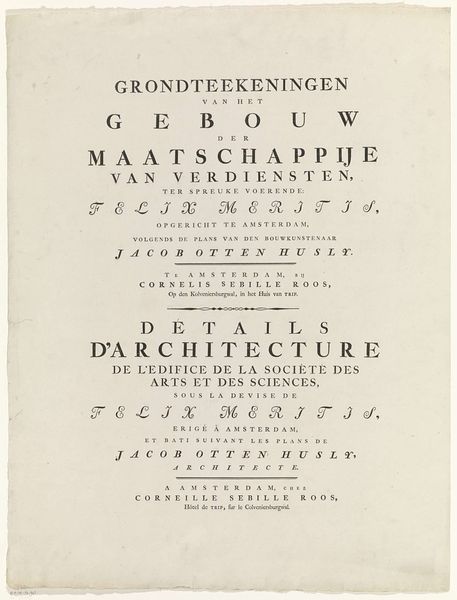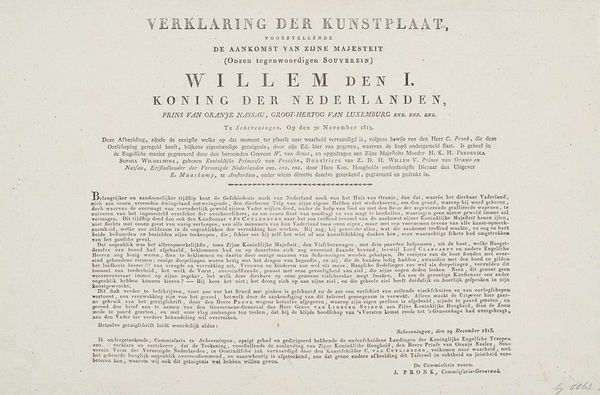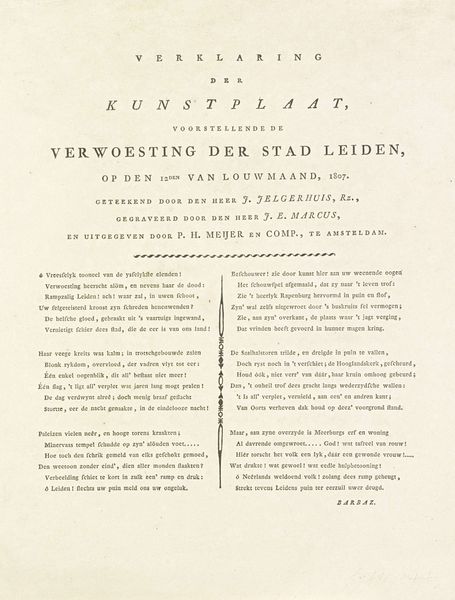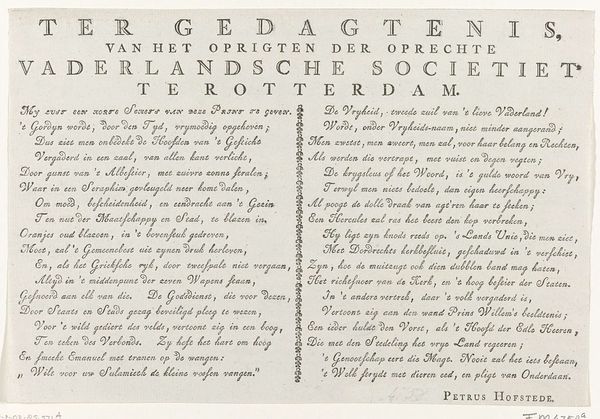
Tekstblad bij de plaat van de verschillende monteringen van schutters, 1787 1787
0:00
0:00
Dimensions: height 412 mm, width 533 mm
Copyright: Rijks Museum: Open Domain
Editor: This is "Tekstblad bij de plaat van de verschillende monteringen van schutters, 1787," a print by Willem Houtgraaff from 1787. It’s essentially a sheet of text, but I’m struck by how it showcases typography. How do we approach interpreting something so utilitarian, so focused on *description*? Curator: Let’s think about production. What does it mean to produce and distribute textual information at this time? Consider the materiality of printmaking—the labor, the press, the dissemination of knowledge itself. It’s not just about describing uniforms; it’s about constructing visual identity, civic pride, and perhaps, social hierarchies through standardized imagery. What were the socio-political factors that contributed to its commission? Editor: So, beyond the listed garments and corps descriptions, we should look at how it contributes to the very notion of the 'citizen soldier,' and the importance of standardized representation? The printing process itself reinforces a specific way of viewing the subject. Curator: Exactly. This text wasn’t made in a vacuum. Uniformity in visual representation serves to reinforce notions of national unity, especially during the volatile political climate of the late 18th century. The physical act of reproducing and circulating this information reinforces that power dynamic. Does looking at the typography change your perspective on that? Editor: It does. The uniformity within the font mirrors that being promoted in society at large, a kind of 'printing' of values upon people. So even typography and text become a social craft of its own. It underscores how deeply material processes and production methods are intertwined with ideology. Curator: Precisely. Considering materials and means helps us recognize the social dimensions embedded in the seemingly simple text sheet, enriching the dialogue on how material interacts with the creation of collective identities.
Comments
No comments
Be the first to comment and join the conversation on the ultimate creative platform.
